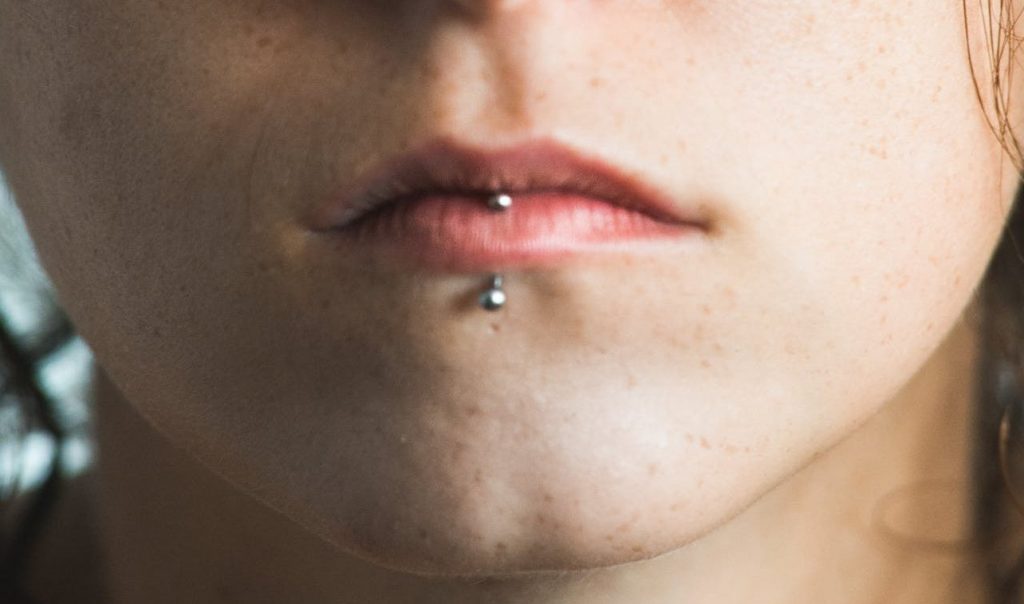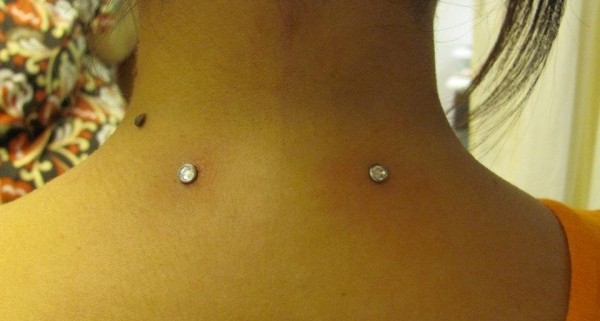High-Risk Piercings
It’s essential to take the time to consider the impact a piercing will have on your body before you pierce.
Long-Term Effects on Body Piercings
Ears

Earlobe piercings are the most common type of piercings and generally safe. When you pierce your earlobe with a normal stud and then remove it, the hole will eventually heal. However, gauging your ears with anything larger than a standard stud will force your lobes to stretch. If you choose to remove the gauge, your earlobes may shrink a little over time, but you will still be left with a gaping hole.

Tragus piercings are relatively a low-risk when done by a professional piercer. That being said, the low blood supply to the area can make it a piercing that has a higher risk for infection and poor scarring. Some of the most common risks of tragus piercings are hypertonic scarring and keloids. Keloids are largely a genetic issue. However, getting a stud instead of a hoop can help to avoid these issues.
Rook piercings are another common type of ear piercing among many. The inner folds of the cartilage can vary significantly from person to person. Some individuals won’t have enough of a cartilage fold in the rook area to pull off this piercing. Additionally, cartilage piercings are susceptible to scarring, cartilage bumps and other permanent issues.

Helix piercings are another ear cartilage piercing on the outer rim of your ear. Keloid scars can form anywhere that there is tissue damage. However, they tend to show up more often with cartilage damage. If you are likely to subconsciously mess with new jewelry, then you might want to reconsider getting a cartilage piercing, as cartilage is more easily damaged.
Oral Piercings: Tongue, Cheek & Lip

The pain associated with many piercings is minimal, but the long-term effects are more widespread. Many factors play a role in the risks of oral piercings, including the type of jewelry you use, placement of the piercing and aftercare. Common risks of oral piercings bacterial infection, damage to teeth or gums, swelling, nerve damage and allergic reaction.
Choosing to go to a professional piercer can reduce the risks. Additionally, inappropriately sized improperly placed jewelry can increase the risks of oral piercings. You can also minimize risk by using balls made of polymer or plastic rather than metal to risk damage to your mouth and infections. Following proper aftercare guidelines can help you to control the risk of exposure to infection.
Surface and Other Body Piercings

While the risks of long-term problems from surface and body piercings are lower, they still exist. The following are a few potential problems of surface and body piercings:
- Scarring
- Damage to the underlying muscles, blood vessels or nerves
- Splitting or tearing the skin
- Allergic reactions
- Irritation at the piercing site
These are just the basics of high-risk piercings. You can greatly reduce many of these risks by visiting a professional piercer at Tattoo Consortium. Our professional piercers can discuss the potential risks of piercings with you to help you determine which piercing is best for you. Contact us with the link below for more information or to schedule a consultation!






